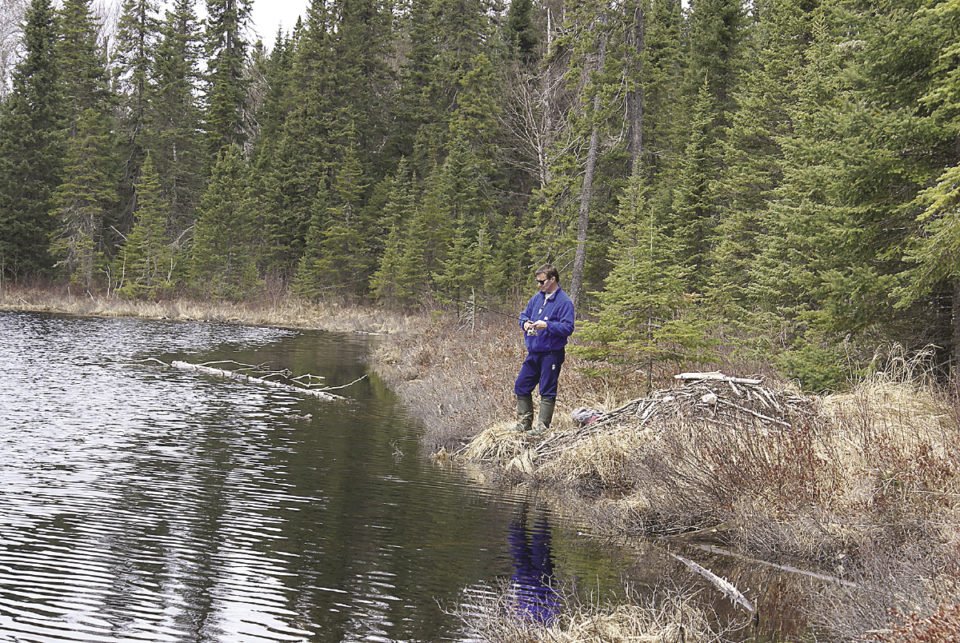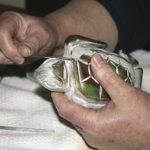After a long, snowy winter, there are very few sights more appealing than a sparkling, ice free lake. If it has brook trout living in it, then so much better. There really are few activities in life more fun and relaxing then paddling around some jewel of a lake, catching the prettiest fresh water fish in the swim.
And spring really is the prime time to fish these lakes. Here is a guide to fishing for small lake brook trout.
Where to Go
Northwestern Ontario literally has hundreds of stocked lakes that are put, grow and take. You can get good information on these water-bodies, and how to find them, via the fish online tool from the Ontario Ministry of Natural Resources: bit.ly/fishontario.
The FishOntario tool can tell you what lakes are being stocked, with how many fish, when and the GPS coordinates. Some of the stocked lakes are very remote, others are quite accessible. It’s staggering how many options there are. If wild, native brook trout are what you fancy, there will be a bit more detective work involved. Northwest Ontario has a few of these small jewels, but generally they are rather well-kept secrets. Limits are also different. I live release wild brook trout. Fish from stocked lakes generally don’t spawn and are there to be harvested.
Brook Trout Locations
When you get to a brook trout lake you have never fished before, take some time to look at the shoreline. Search for points, reeds, Labrador tea beds, fallen trees in the water, beaver houses and rock reefs are all worth a poke. So is any water moving in or out. In the spring time, after the ice has receded, brookies will generally move up into the shoreline cover, where the water warms quickly and the food they prefer will first emerge. This food can include dace, stickleback, leeches, scuds, nymphs and any number of amphibians. Trout food will get more active as the thermometer rises. And this usually happens fast.
Several years ago, I fished a natural brook trout lake with a friend on the exact day the ice went out. In fact, the canoe had to bust through half a lake worth of skim ice to get to the clear side. Initially, the fishing was terrible, but as the early May sun burned down, the ice vanished and the trout turned on. So frenzied was the bite that we would have multiple fish trying to hit the lure on retrieve. If one shook the spoon, another brookie would smash it. It was simply the most incredible trout bite ever. A week later we went back, hoping for a repeat. Never had a bite. Welcome to brook trout fishing.
Techniques
You can catch spring brook trout in a variety of ways and with a few different techniques. If you fish from shore, I would recommend finding a vantage point that allows you to case parallel to the shore. You will catch 90 percent of the fish within 10 feet of shore. Another option is still fish with a float, sinker and worm or nymph off a beaver house or point. Float fishing can be a deadly way to catch trout that are working an area repeatedly. They come to you. Fly fishing can be difficult from the shores of spec lakes, but is doable if the back cast is clear.
As for tackle, spin-fishing anglers will be well served by smaller spoons like the Little Cleo, Krocodile and EGB. Spinners can work wonders as well, with the #3 Mepps Aglia and the Panther Martin topping the charts. Small minnow-sized crankbaits such as the Rapala Husky Jerk, Rapala Countdown or Live Target redbelly dace can be deadly. A light or medium/light weight spinning rod of 6 to 7 feet is a good all-around choice for a rod. I don’t recommend going too light for brookies in small lakes. There is too much timber, weeds and rocks that they can get tangled up in. I’d recommend 6-pound test monofilament at lightest, but generally use 8-pound.
As for flies, the standard bearers are the Wooly Bugger, Matuka Sculpin, Strip Leech or anything that looks buggy or like a minnow. Spring brookies are generally pretty receptive to a wet fly or nymph cast and slowly stripped back in. You can also troll a fly and have pretty impressive action. Trolling also helps you track down where brook trout are hanging out. A 6 or 7 weight fly line with a sink tip or full sink will work well in a lake. You don’t need to make long casts, just be accurate.
Generally, it’s easier and more effective to fish from a canoe, belly boat or kayak. Remember that the water in spring is very cold, so you will need insulated waders in a belly boat. Canoes and kayaks allow you more mobility.
Brook trout fishing in small lakes is one of the great treats in angling. What’s even better is that as often as not, there is not another soul around. Just you and the bookies in splendid isolation.





